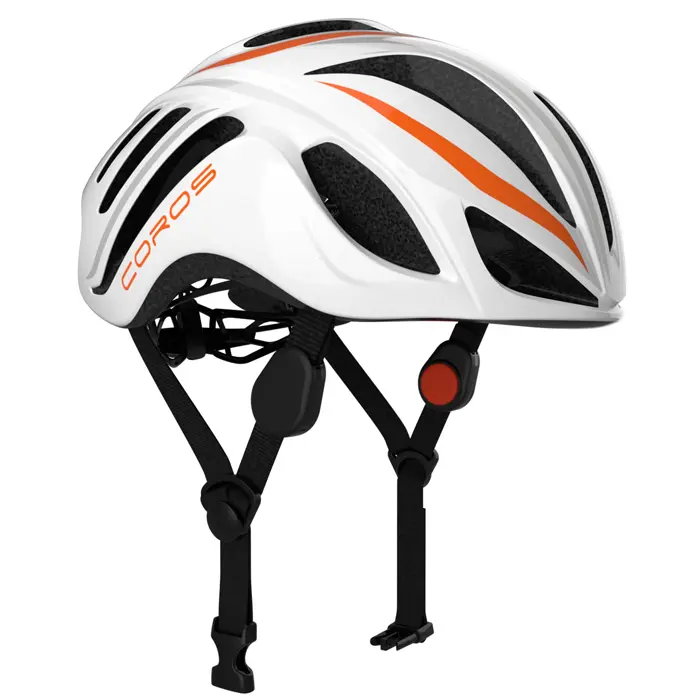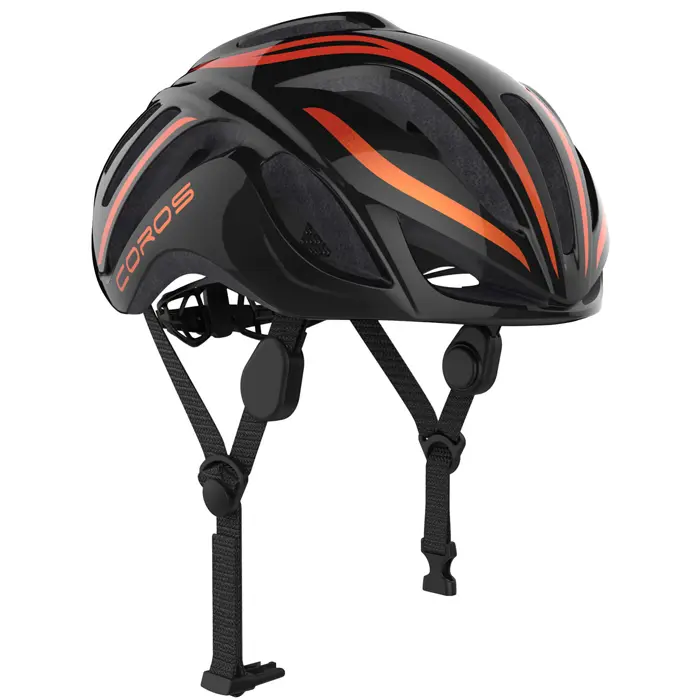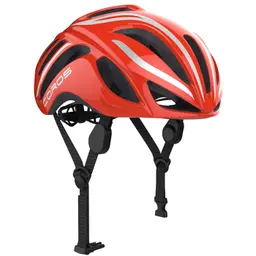Coros LINX Smart Cycling Helmet






Description
Field Notes: With a design that drew Active Junky from the first, the shell itself is durable, resilient polycarbonate that has a springy quality as lower impacts and energy-diffusing properties at higher impacts. The sense of a single, enveloping shell provides rider confidence and presents fewer opportunities for the shell to catch or peel away from the liner, one which varies in thickness based upon the helmet’s geometry and anticipated impact zones. Contours of the shell generate a time trialist energy despite its suitability for less fervent pedaling.
Interior EPS impact-resistant foam is, upon closer examination, one of the most airflow- promoting Active Junky’s ever tested. With almost a vaulted interior profile, even lower speed riding generates adequate air movement from front to rear. Testers liked the rear spoiler bridge made of foam to add protection to head and electronics. Helmet balance is good but front-weighted because of the rear, integrated electronics. Ventilation focused on the rammed-air, offset top shell design to “scoop and force” through the helmet in tandem with the deep interior channels. Testers favored the system that complements the sun-fighting gloss white shell finish.
The combination of shape, vent configuration (of 15 openings) and interior make Coros the most sophisticated in seeking a unique approach to maintaining aerodynamics even during faster descents. The same is true with the helmet’s back, structured to shelter and protect electronics without giving crosswinds a target. Coros’ headband and harness assembly met Active Junky’s expectations for a premium product. Using more thin-gauge material than many others tested, the suspension system is spider web-like in nature, centering stability on the narrow, dial-controlled banding that’s cushioned in both front and rear. The rear pad bears a resemblance both to the Chrysler logo and the Lyft mustache: a coincidence or conspiracy lurking here?
Side, front and top padding are integrated into a single, padded six-pointed piece; Coros offers both thicker and thinner options within the helmet package but testers preferred the plusher option to balance the perimeter pressure on the headband from the narrower tensioning system. The small tensioning nob tightens in reasonable increments and releases in larger ones that are somewhat unsettling because of their harsh, noisy initial release (that doesn’t match the helmet’s refinement in other areas). While an easily-accessible tensioning knob, it requires some good finger squeezing to gain control when wearing cycling gloves (a weak point of the helmet).
Fit feels more technical and less relaxed than some models tested with pressure less even around the entire perimeter. On-head stability is best under full tension and with the chin strap in place. The strap system is well anchored with the front stay well inside the EPS foam lining to eliminate snagging. Strap width is right-sized with the ventilated webbing weave providing needed relief when the helmet is strapped down tight. On-strap speaker position can be tweaked but is designed to stay out of the way and allow normal hearing to over-ride any communication coming through the wireless phone connection. Clip connection is solid and repeatable, with the red male connector easier to spot with peripheral vision. Side strap speakers appear to have little effect on the Coros’ perceived weight or side-to-side balance.
At the core, Coros was created to connect, promoting vigorous riding while integrating communication into a forward-thinking design. Active Junky found the helmet-iPhone connection was fast and seamless with the BLE protocol. The free Coros app is worthwhile in combining multiple functions, mostly centered on comms and basic, route-finding navigation along with trip data. Verbal confirmation of connection is vital given the power switch is small and tucked well up under the sloping rear shell: operation is only possible with ungloved hands and the press switch is of average quality. Incoming calls tended to sound tinny, while outgoing voice calls appeared muffled at times. Testers’ experience with the audio elements was variable as a tighter headstrap – and a lowered, down in the bars riding position – greatly improved the frequency response, clarity and volume both of incoming voice and music as well as outgoing phone dialogue; quality improved by over 30% with the strap secured. Frequency response is rated at 100Hz to 20KHz while even higher speaker volumes still allowed ambient sounds to come through, furthering the safety elements of Coros.
Clearly, the crash-notification element of the helmet is a major feature in and of itself, something that cost well over $120 only three years ago from companies like ICE. Testers tried various impact levels to get it to activate, after setting the Emergency Contact data took repeated attempts and emails with Customer Service. Smart Remote is another key, positive element of the entire package as bar-mounted, single-modules controls manage incoming functions as well as the walkie talkie utility when employed. Securing the Remote with O-rings takes only moments and allows clip-out removal of the control unit upon arrival. Micro USB charging access is through a hard plastic panel; the hinged connection to the helmet is a potential weak point in the system. Two sizes cover 54cm to 61cm in a helmet certified by the CPSC and carrying a one-year limited warranty.
Tester Comments: “Coros’ padded chin guard is a joy – and essential to allowing enough strap tension to optimize physical connection with the bone conductions speakers and microphone. Voice navigation with the wind-resistant microphone is a standout feature here, allowing the rider to concentrate on road and traffic conditions.”
Key Attribute: Integration
